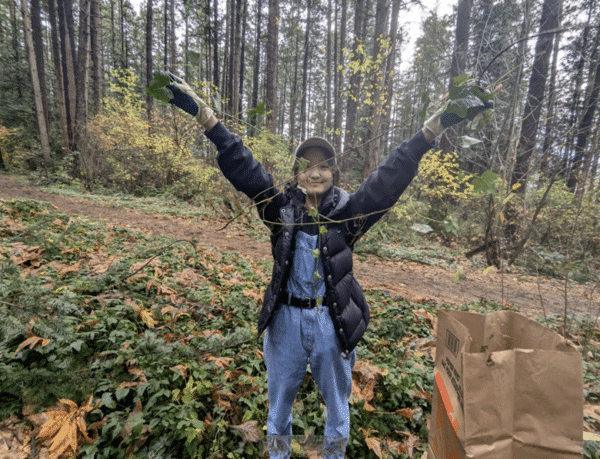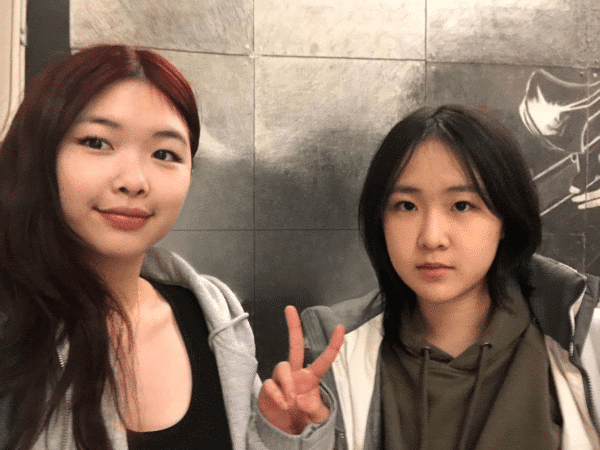By Alex Mutch| June 7, 2024
Taking something no longer of use and turning it into a tangible product is an innovative way to reduce waste. Sometimes the inspiration for repurposing happens when you least expect it.
That was the case for one ISCBC volunteer. After removing invasive species from their local community, they developed a connection with an invasive plant when they discovered they could use it to make paper. They began an initiative to find other ways to repurpose invasive plants rather than simply uprooting them.
Meet Joshua Ralph, a settler-occupier on the shared lands of the Tsleil-Waututh, Squamish, and Musqueam Nations, known as “Vancouver.” Joshua is a community-engaged artist interested in changed and changing ecologies, often found in the bushes partaking in environmental restoration, or looking at birds. Through their extensive volunteer work with ISCBC and the Invasive Art Initiative, Joshua has found a creative outlet through volunteering and invasive plant removal.
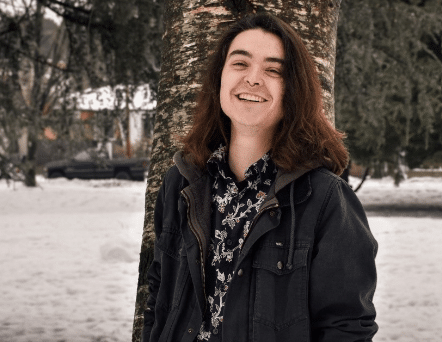
Joshua has been an ISCBC Youth Volunteer for several years, leading projects encouraging others to plant native plants rather than invasive species. When asked which invasive species they felt most connected to, Joshua responded with reed canary grass (Phalaris arundinacea). This is their story:
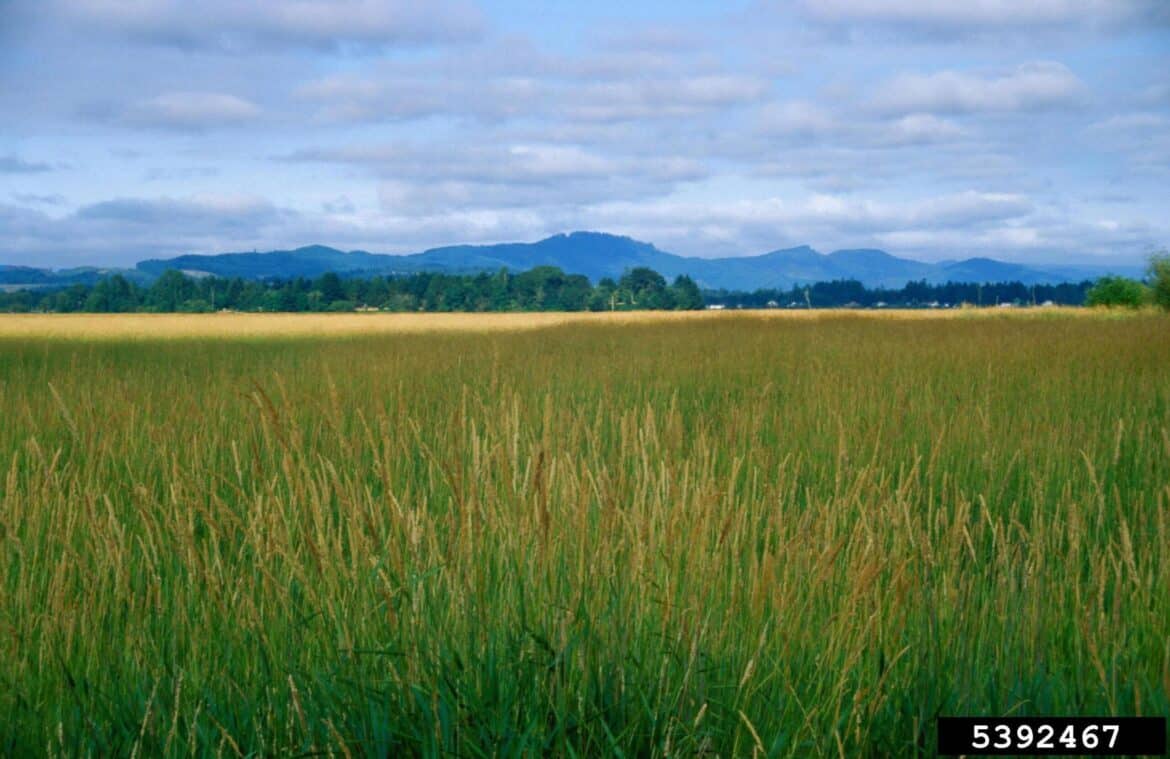
“My connection to this plant was formed by chance; I was getting into paper making as personal practice and, through research, discovered grass’s ability to be made into an effective pulp. After experimentation with a patch growing along the railroad near my house at the time, I felt enamoured by this plant’s stories of resiliency, mystery, and hybridization. Much of my work in restoration is partaken with the preservation of bird habitat in mind. Reed canary grass has been studied on sites where it has overtaken the ground cover to make hunting exponentially more difficult for birds of prey. This is a species often encountered in sensitive riparian areas and is often found adjacent to environments heavily altered by humans. Reed canary grass is very likely seen daily by most residents of North America perhaps without individuals realizing what it is or how it is invasive. I see large expanses of reed canary grass and wish for more flowers, mosses, birds, and native grass.”
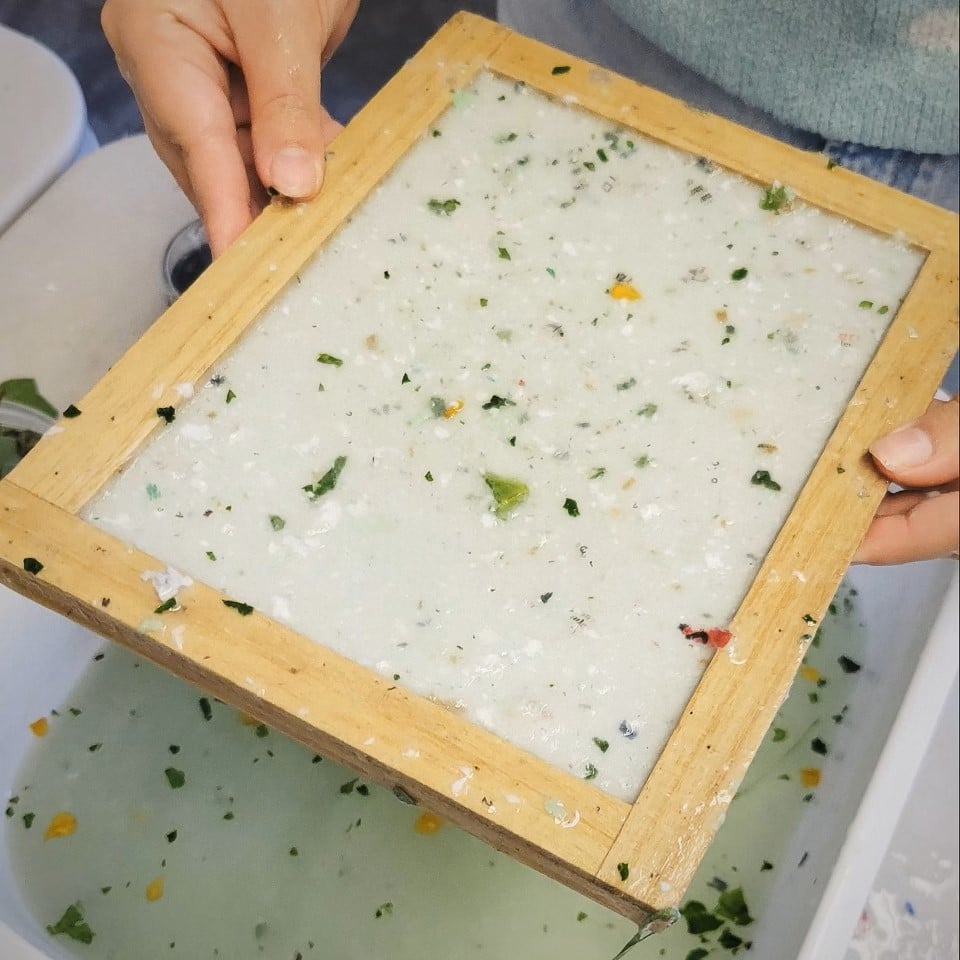
Alongside their volunteer removal work with ISCBC, Joshua has led the Invasive Art Initiative for two years. This organization uses invasive plants harvested from local ecosystems and repurposes them to create stunning art pieces and other practical household items.
“I’d gotten involved as I was looking for ways to make a palpable difference in my local greenspaces and parks; I was itching to get dirty and help nature for the better. Throughout the past two years, I’ve headed the Invasive Art Initiative, a traveling project promoting environmental dialogues and public workshops on practical and creative uses for invasive plant species. I’ve had the privilege of collaborating with a dozen environmental organizations on the project’s facilitation and have helped to guide over 350 participants in turning English ivy, Himalayan blackberry, and black locust tree, among other invasive plants, into useable materials such as pencils, inks, and soaps.”
In closing, Joshua shares encouraging words to empower other youth volunteers.
“Be courageous and speak your truth; others will take notice. Remember to remember these continually altered ecosystems you may encounter; the world needs memories to hold to – to know what has been lost and what can be saved.”
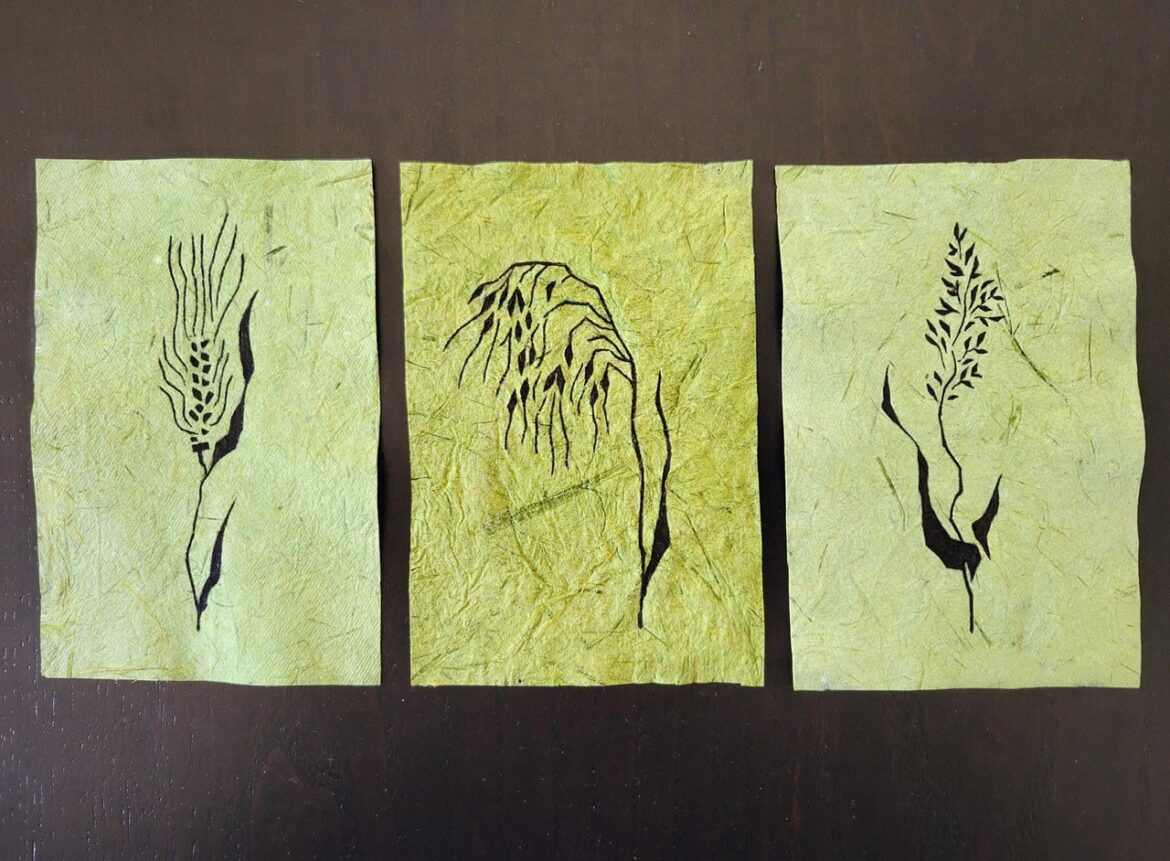

Funded by the Government of Canada.
Financé par le gouvernement du Canada.
Alex Mutch is a youth engagement coordinator at ISCBC. He values inclusivity and strives to create equitable and inviting environments in all the communities he is a part of. In his spare time, Alex enjoys playing volleyball, hiking, reading, and solving Rubik’s cubes. You can reach Alex at amutch@bcinvasives.ca.
Share



